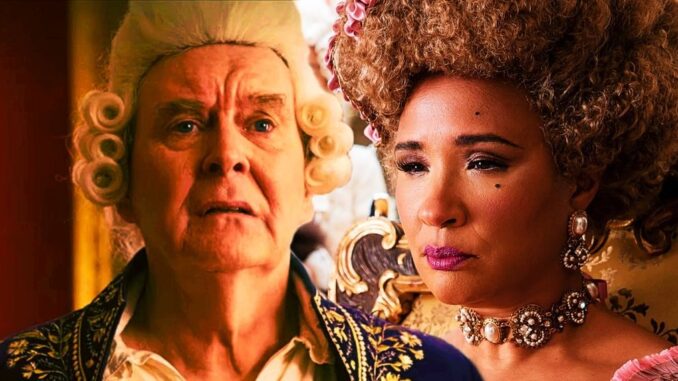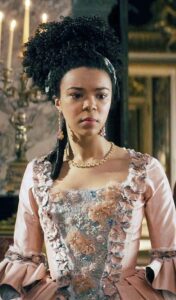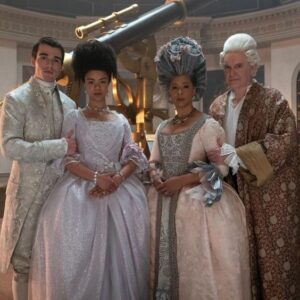
The Wildest Facts About the Real Queen Charlotte From Bridgerton
Star-crossed lovers come and go on Bridgerton—recall the uproar around Regé-Jean Page’s departure in 2021—but Golda Rosheuvel’s Queen Charlotte has been a constant in Shonda Rhimes’s Netflix hit. Now, the German princess turned British queen is getting her own spin-off, with newcomer India Amarteifio set to play the royal during her teenage years in Queen Charlotte: A Bridgerton Story. Ahead of the series’s release on May 4, Vogue revisits the most remarkable details about the late monarch’s life and character, from her obsession with snuff to her passion for Pomeranians.
She may have been Britain’s first Black queen

Born Princess Charlotte of Mecklenburg-Strelitz in northeastern Germany, there’s been a wealth of (frequently problematic) debate about the racial origins of Queen Victoria’s grandmother and Queen Elizabeth II’s great-great-great-great grandmother. Specifically, historian Mario de Valdes y Cocom believes her to be descended from a 13th-century Portuguese monarch and his north African lover, Madragana. While other academics have questioned the validity of this genealogy, it’s the speculation around Charlotte’s heritage that inspired Bridgerton showrunner Chris Van Dusen’s powerfully diverse casting in the original series. (Notably, Queen Charlotte never appears in author Julia Quinn’s Bridgerton novels.)
Her hobbies included music and marsupial maintenance
Charlotte adored music, hiring Johann Christian Bach, the son of the legendary Johann Sebastian Bach, as her music teacher. She also invited Mozart to perform for her as a child, a fact referenced in the Bridgerton episode “Shock and Delight,” and often performed musical duets with her husband on the flute and harpsichord. Meanwhile, at the fledgling Kew Gardens, she became deeply interested in naturalism, both cataloging plants and founding a menagerie that sheltered the first kangaroos on British soil. Most impressively, she aligned herself with the feminist Bluestockings movement—with novelist Fanny Burney, writer Elizabeth Harcourt and philosopher Margaret Cavendish among her inner circle.
She married her husband at first sight

Queen Charlotte arrived in London to become the future queen at just 17 years old, speaking virtually no English. The sea journey from her native German duchy had been so tempestuous, and the princess so ill, that her wedding dress—heavily studded with diamonds—no longer fit her, her purple velvet cape falling off her shoulders so that the “spectators knew as much of her upper half as the king himself,” noted Horace Walpole wryly. Nevertheless, she married King George III just six hours after meeting him for the first time on 8 September 1761, in a ceremony at the Chapel Royal in St James’s Palace.
She’s the original lap dog fanatic
Centuries before The Simple Life, Queen Charlotte had a penchant for Pomeranians, bringing two of them with her when she moved to England. (Named Phoebe and Mercury, this original pair were later captured by Thomas Gainsborough in a royal portrait.) In later years, she frequently gifted dogs to her courtiers, keeping her own Pomeranians around her in her state rooms. Her son, King George IV, and his niece, Queen Victoria, both inherited her love for the species—with the latter even starting a dedicated breeding program.
She had more than a dozen children
In spite of their hastily arranged wedding, George and Charlotte’s union proved remarkably happy for at least 25 years—with the Queen having no fewer than 15 children, 14 of whom were born in Buckingham Palace. In fact, it’s Charlotte who changed the royal family’s London residence from St James’s Palace to Buckingham Palace—bought by George III as Buckingham House in 1762—as well as Frogmore House in Windsor Park, where the Duke and Duchess of Sussex held their wedding reception, in 1792. After the King’s illness prevented him from ruling in his later years, she also increasingly spent time with him at Kew Palace, where he underwent countless leechings and medicinal baths.
Her snuff addiction is the stuff of legend
As highlighted in Bridgerton, Queen Charlotte did, indeed, have a snuff addiction, keeping a dedicated room filled with ground tobacco at Windsor Castle and accumulating no fewer than 90 snuff boxes by the time of her death in 1818. According to the Royal Collection Trust, she used the tobacco as a means of curing her frequent headaches, counting Violet Strasbourg among her favorite blends: a “mixture of powdered rappee, bitter almonds, ambergris, and attarju, which she augmented with a spoonful of green tea every morning”.
She played the role of Gossip Girl at court
Bridgerton’s depiction of Queen Charlotte as highly involved in the matchmaking season is factually correct. George III actually established the first debutante ball in 1780 in honor of his wife’s birthday—with the so-called Queen Charlotte’s Ball held at Buckingham Palace every year until Queen Elizabeth II canceled it in the ’50s. Even after her husband’s descent into madness, she wrote him letters recounting the gossip around the Ton, many of which can be read in the Royal Archives.
